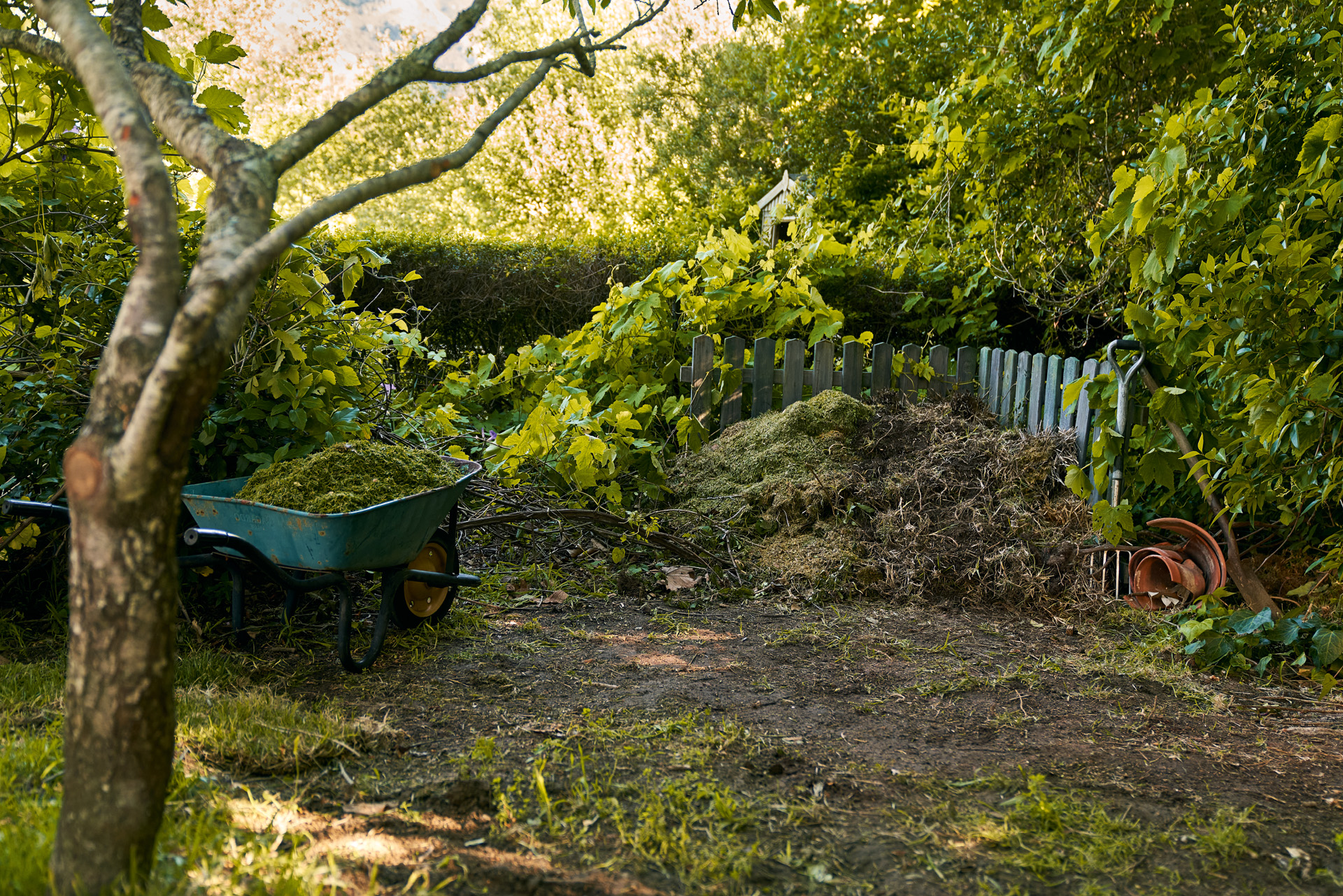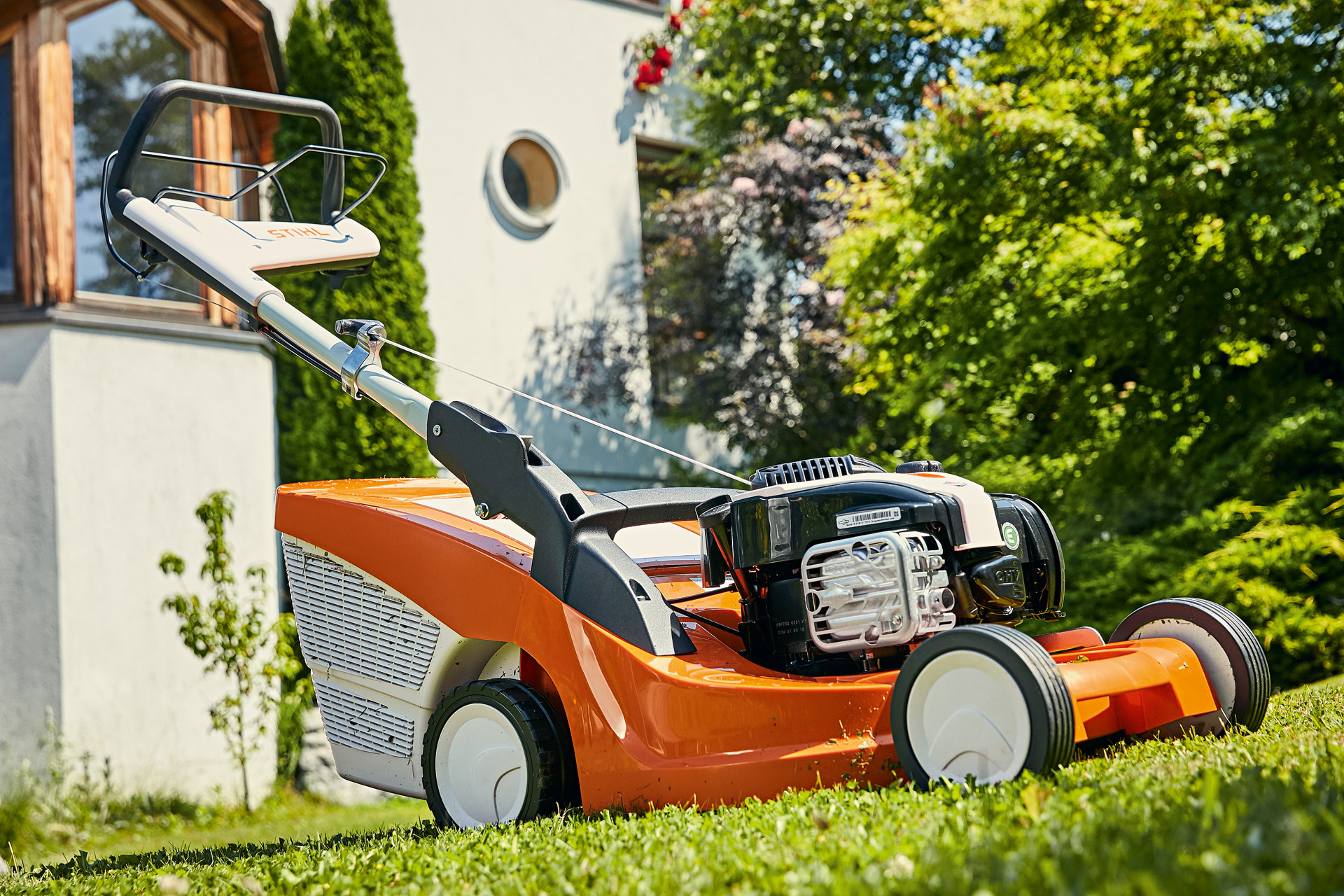What is mulching and mulch mowing?
Mulching uses natural garden waste as a source of nutrients for your soil. Mulch mowing means you get a healthy lawn while saving time and resources.
04.07.2024

What is mulching?
In ecological horticulture, mulch refers to organic matter such as leaves or grass cuttings added to soil to protect it and supply it with nutrients. Mulching adds a loose layer of shredded plant material on top of the soil, a valuable method to use in almost every area of your garden and a great way to save time, money and effort.
How does mulching work?
Mulching helps soil retain moisture by shading the earth and acting as a blanket. It helps store water in the ground so the soil remains loose and will not dry out too quickly. Mulching also helps plants grow by forming a protective layer against heavy rain and cold temperatures. Over time, plant matter used for mulching is broken down by earthworms and soil-dwelling organisms into valuable natural fertilisers and nutrients for plants.
Mulching material
Many natural substances can be suitable for mulching material, from chipped bark to sawdust. You may find that your usual garden waste offers everything you need to start mulching yourself. Take a look at our suggested materials and uses.
| Material | Usage |
|---|---|
| Shredded wood matter |
|
| Grass cuttings |
|
| Leaves |
|
| Chipped bark |
|
| Gravel, chippings and stones |
|

Mulching your vegetable garden
For your vegetable beds, use a mulching mixture that you can apply regularly. Use it sparingly as mulching can attract snails and rodents, so little and often is key. You can mulch with a range of materials and methods that will support the soil and the growth of your plants. Make sure that the grass and plant cuttings have dried out slightly before you sprinkle them over the bed.
Mulching mixture for your vegetable beds
- A “green mulch” uses living plants to cover the soil and bring benefits to your vegetable bed. Look up catch crops and companion plants that suit what you are growing
- Leaves
- Straw
- Compost
- Grass clippings
- Ideal for: radishes, herbs, cress
Mulching for your lawn – achieve a lush, green lawn, naturally

Your lawn can also benefit from an organic mulching technique. In fact, not only does mulch mowing return natural nutrients to the grass, it also saves you time and effort because you no longer have to collect or dispose of the grass cuttings. A mulching mower finely chops clippings and scatters them over the grass. This combines the three key steps of any lawn care regime – mowing, disposing of the cuttings and fertilising – in a single step. So it’s good for the environment and your wallet!

Advantages of mulch mowing
A long-term experiment at the University of Natural Resources and Life Sciences in Vienna has demonstrated that mulch mowing brings significant advantages and stimulates lawn growth. Over four years, a 1,000 m2 lawn was mowed with a standard lawn mower. The cuttings were then disposed of and the lawn was fertilised with a mineral fertiliser. At the same time, a separate area of the same size was cultivated using a mulching mower, with the cuttings left on the ground. The results speak for themselves:
- The grass was consistently denser and more luscious after being mulched 21 times per year.
- Mulch mowing proved to be more effective than four applications of a mineral fertiliser.
- In terms of quantity and ratio, the nutrients returned to the soil corresponded exactly to the requirements of the living grass.
Why is mulch mowing growing in popularity?
- Mulching as you mow means less matting and thatch because the grass itself can grow better. A well-nourished lawn has no room for weeds and moss, so it stays looking perfect.
- If you have a thriving lawn, you can expect around 1.5 to 2 kg of cuttings from each square metre per year – if you have a 1,000 m² lawn, that’s 1.5 to 2 tonnes! Disposal of green waste is another aspect to consider and another benefit that mulching offers.

Mulch mowing tips
To achieve the very best results when mulching, make sure the grass cuttings stay on the surface of the lawn, there are not too many cuttings, and they are finely chopped and evenly distributed. The nitrogen they contain will be quickly mineralised and made available to the grass. Follow our tips to get the most out of mulching your lawn:
- If you mulch mow your lawn, you should cut the grass more often so that the clippings aren't too long.
- Make the job easy with a special STIHL mulching mower. It finely chops the cuttings, so they are mineralised quickly, and it scatters them evenly. Alternatively, you can buy a STIHL mulching kit that makes it possible to convert most standard lawn mowers into garden mulchers.
- You should cut the grass by around a third of its height – less if the weather is very dry.
- Mow when the grass is dry if possible. If you have to mow when it’s damp, move a little slower and set a higher cutting height.
- Always use the highest speed setting (full power) and make sure the blades are nice and sharp.
- Check the mower housing regularly and clean off any grass residue.
- Make sure you overlap the lines as you mow so you don’t miss any strips.
- Mow very long grass in stages over multiple days.
- Vary your mowing direction. This will mean that the grass is collected more effectively, and the mulch clippings will be distributed more evenly.
Summary
- Mulching is the process of applying shredded plant matter or other material as a loose layer on top of the soil.
- Mulch protects the soil and returns nutrients to it as it breaks down.
- Create your own mulch using normal garden waste.
- Make sure you use the right mulching material for the different areas of your garden.
- Mulch mowing cuts grass, finely chops the cuttings and scatters the particles directly onto the ground.
- Studies have shown that mulch mowing saves time and money and is good for the environment.


